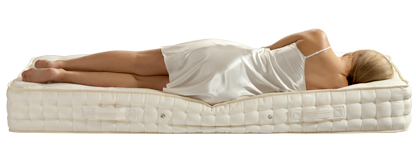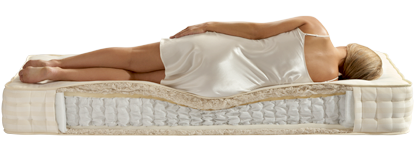Luckily we have done some research to find out which of these myths are true and which are codswallop.
1) Everyone needs to sleep 8 hours a night.
Everyone is different; this one is certainly a myth. There is no single rule that applies to everyone, some people can function perfectly on 6 hours sleep and feel lethargic after sleeping too much if they attempt to sleep for 8 and there are others who still do not feel rested after 8 hours! Joyce Walsleben, psychologist and author of many books about sleep, puts it: “You’ll know you’re getting enough when you don’t feel like nodding off in a boring situation in the afternoon.”
2) Getting more sleep is healthier for you.
Not true, Actually quite the opposite, there has been studies to show that people who sleep 8+ hours a night regularly die younger than those who get 6-8. The reasons for this is currently unknown, but they have linked oversleeping to conditions like diabetes, heart conditions, depression, headaches and obesity.
3) Waking up during the night will make you tired the next day.
Not always true, if you are waking up of your own accord this could be your own natural sleep cycle, as many animals wake up during the night and return back to sleep with no resulting tiredness. Obviously if you are constantly being woken up then that is a different story.
4) You can catch up on lost sleep on the weekend.
Unfortunately this is a myth. Harvard sleep expert Robert Stickgold has coined the term ‘sleep bulimia’ to describe the process of stocking up on sleep purely at the weekends. This, he says, is counter-productive as it will upset circadian rhythms, making it even harder to achieve a refreshing sleep.
5) Exercising before bed will help you sleep.
Don’t get me wrong being fit and having a regular exercise routine is definitely the key to enjoying a good night’s sleep; but doing it too close to your bed time can have a negative impact and actually hinder your sleep. In fact, sleep experts have even recommended completely avoiding exercise for up to 3 hours before you hit the sack. This is mainly because exercise raises your body temperature and won’t start to fall until 5-6 hours later. Therefore it is vital to exercise at set times regularly, either in the morning or afternoon.
6) Alcohol helps you sleep.
Another myth: Alcohol will cause you to fall asleep quicker, but you will be easily disrupted and sleep will not be as deep, so the quality of your sleep will be compromised.
There are many sleep related myths out there, one thing that is guaranteed to give you the most amazing night’s sleep is picking the correct mattress for you. There’s an amazingly wide variety of mattresses on the market today, so please do your research prior to any purchase, check our other blogs for help with this.
Visit our website : www.mattresstime.co.uk
We will help you sleep like this:












.jpg)









